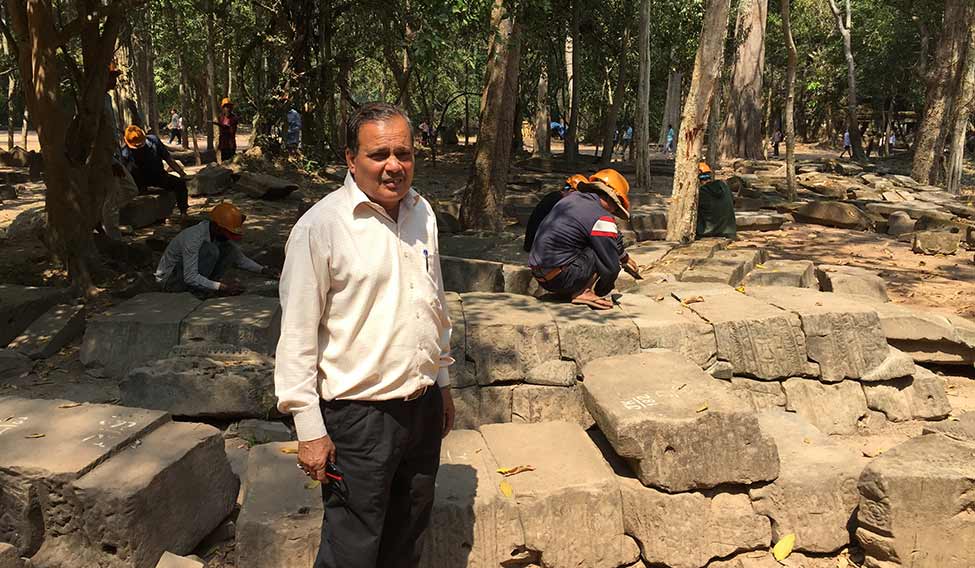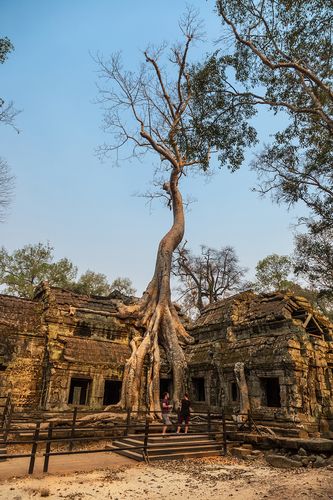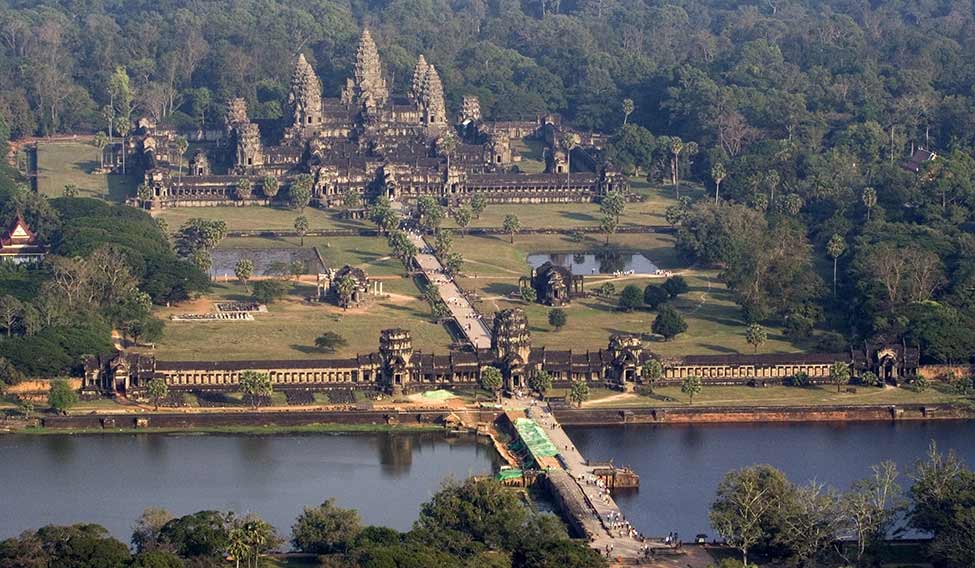Even as Angelina Jolie returned to Cambodia for the premiere of her latest directorial venture, the temple made famous by her 2001 blockbuster Lara Croft: Tomb Raider is taking rebirth from a tangle of myths, roots, branches and debris. In the world heritage complex of Angkor in northwest Cambodia, the main temple, Angkor Vat, catches the visitors’ attention for its sheer size, the intricate images in its stone gallery and the beauty of its gardens, moats and fountains. But it is the Ta Prohm temple that generates shudders as well as howls of delight from tourists. The temple, which was first featured in Steven Spielberg’s Indiana Jones and the Temple of Doom, was reduced to rubble by the towering trees and slithering branches. It owes its rebirth to the dedicated work of a group of Indian archaeologists.
 The gallery of the Ta Prohm temple | Courtesy: ASI
The gallery of the Ta Prohm temple | Courtesy: ASI
If the Tomb Raider brought the ravages of time and nature of the temple to the world’s attention, Jolie’s latest directorial venture, First They Killed My Father: A Daughter of Cambodia Remembers, revived the horrors of the Khmer Rouge, which during its five years of brutal rule between 1975 and 1980 killed a million Cambodians and displaced many more. As Jolie’s movie is enthralling viewers, archaeologist D.S. Sood and his team from the Archaeological Survey of India is giving Ta Prohm a new shape.
 Archaeologist D.S. Sood, who led the team that brought the Ta Prohm temple back to life | K.S. Sachidananda Murthy
Archaeologist D.S. Sood, who led the team that brought the Ta Prohm temple back to life | K.S. Sachidananda Murthy
Unlike in the case of thousands of other temples of the Khmer empire, Ta Prohm’s towering trees cannot be chopped down without bringing everything down. So, the Forest Research Institute in Dehradun has sent silviculturists to help Sood preserve the trees and restore the temple. Thus, the main gallery which is getting completed, will have the giant silkwood trees, with their gnarled branches crouching over.

Sood, who has lived and breathed Ta Prohm for the past decade, is proud of the way the sanctum sanctorum has been restored. The gallery, with its rich stone drawings and corner pavilions, had collapsed from the weight of trees and mud. “The collapsed stones were individually documented, lifted and stacked. The technique of anastylosis helped determine what was the original wall, and then the floor was taken apart. The broken stone elements of the floor, columns and roof were repaired, mended and joined with threaded stainless pins and other material,” says Sood, who relies on two Indian assistants and a group of Cambodian workers. “A structural test was done for each section. The drainage system, built by the 12th century architects to drain rainwater during the heavy monsoon months was restored in a glass encasing to let visitors understand the ancient drainage system,” he says.
The project has been financed by the ministry of external affairs, with the Indian ambassador to Cambodia Naveen Srivastava personally monitoring the work. The project is part of the work undertaken in southeast Asia, under the Look East policy, to nurture ancient cultural links through archaeological projects in Cambodia, Vietnam, Laos and Thailand. At Ta Prohm, the ASI is also restoring the 43-metre-long causeway between the temple’s third and fourth enclosures. Sood says bringing back to life every enclosure, gallery, causeway and tower of Ta Prohm is the work of a lifetime. It is a labour of love, where the sacred trees worshipped by the Cambodians remain a benign presence for the team from India, even as they stay immune to the oohs and aahs of star-stuck tourists.













